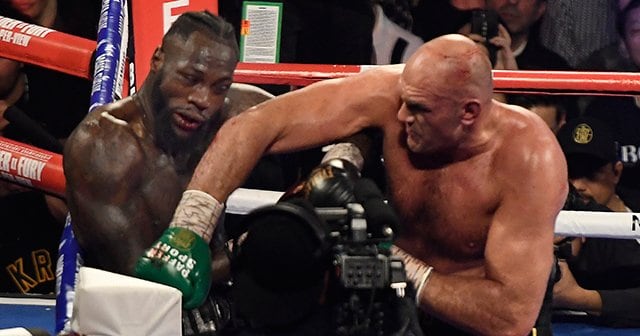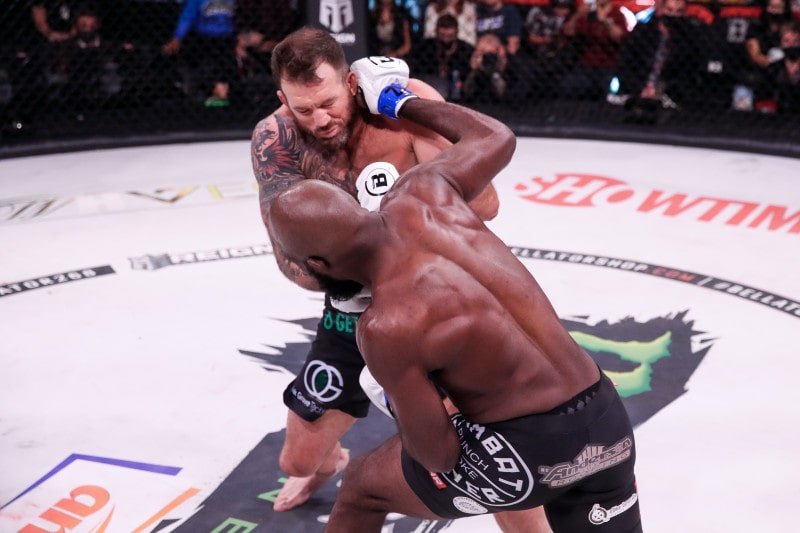
When watching a boxing match, fans and new followers often ask, “How many rounds does a boxing match last?”
This question has different answers depending on professional vs amateur boxing and even the type of match (title match or non-title match).
Understanding the number of rounds in boxing is essential to understanding match strategy, how athletes train, and even the appeal of the sport.
In this article, we’ll take a closer look at how many rounds a boxing match typically lasts, and the rules and traditions behind it.
目次
- 1 What is the standard for the number of rounds in a boxing match?
- 2 Professional boxing match structure: Reasons for maximum number of rounds
- 3 Amateur boxing rules and number of rounds
- 4 History of boxing: Changes in the number of rounds
- 5 Training and strategy: The number of rounds makes a difference
What is the standard for the number of rounds in a boxing match?
In boxing matches, the number of rounds is set differently for professional and amateur matches, and the number of rounds also differs depending on whether the match is a title match or a non-title match.
These standards are determined with consideration to competition safety, athlete durability, and audience entertainment.
Different number of rounds for pros and amateurs
- Professional Boxing: Professional boxing matches generally last from four rounds up to 12 rounds. World title matches and some important bouts are traditionally played over 12 rounds, but lower-tier cards and bouts involving new players may have shorter bouts of four, six, or eight rounds.
- Amateur Boxing: In amateur boxing, matches are held in three to four rounds, with each round lasting three minutes. Strict regulations are put in place at events such as the Olympics and international competitions to prioritize the safety of athletes.
Difference between title match and non-title match
- Title Matches: In professional boxing, the standard for title fights is usually 12 rounds. This is to ensure the most fair and competitive battle between title holders and challengers. Title matches test a fighter’s stamina and skill.
- Non-Title Matches: The number of rounds in a non-title match varies depending on the promoter and contract, and may be 4, 6, 8, or sometimes 10 rounds. These matches are played for players to improve their rankings or gain experience.
conclusion
The number of rounds in a boxing match varies greatly depending on the type of fight (professional or amateur) and whether the fight is a title fight or not.
These differences have been established with sporting traditions, player safety and spectator satisfaction in mind.
For athletes, understanding these standards and preparing accordingly is directly linked to success in competition.

Professional boxing match structure: Reasons for maximum number of rounds
The maximum number of rounds in a professional boxing match is traditionally 12 rounds.
This number has been set to test the players’ physical strength and skills in a well-balanced manner, and to provide a highly satisfying match for the audience.
Fifteen round bouts were once common, but were shortened to 12 rounds in the 1980s for fighter safety.
Number of rounds for world title matches and regional title matches
- World Title Fights: Twelve rounds are generally standard for world title fights. This is to ensure that the highest level of competition takes place over a long period of time, allowing athletes to fully demonstrate their skills, strategies, and endurance.
- Regional Title Matches: Regional title matches and other smaller title matches may have 10 rounds or less. This takes into account the experience and preparation of the fighters in regional level matches, but 12 rounds are often used for important title fights.
Effect of number of rounds on players
- Strength and Stamina: Maximum round matches test a fighter’s strength and stamina to the limit. Long matches require players to have excellent conditioning and endurance, increasing the importance of training.
- Strategy and technique: Strategy and technique become even more important in matches with longer rounds. Players must adjust their strategies throughout the match, finding and exploiting their opponent’s weaknesses. It also tests your ability to maintain technique under increasing fatigue.
- Mental strength: Long-term battles have a big impact on a player’s mental strength. Your ability to stay focused and execute your strategy under pressure can be the difference between winning and losing.
The match structure and number of rounds in professional boxing are a result of consideration of traditional elements of the sport and athlete safety.
The 12 rounds of a world title match are considered the ultimate stage to test a fighter’s skill, physical strength, and mental ability.
Athletes are required to properly prepare for these matches and push themselves beyond their limits.

Amateur boxing rules and number of rounds
Amateur boxing, unlike professional boxing, has rules that prioritize athlete safety and sportsmanship.
This includes setting the number of rounds, with matches generally being shorter to protect the health of the athletes and focus on skill and speed.
Number of rounds in Olympic and international competitions
- Olympics: One of the most prestigious competitions in amateur boxing, the Olympics consists of three rounds for men and four rounds for women. Each round is 3 minutes long.
- Other international competitions: The World Championships and other international competitions organized by the AIBA (International Boxing Association) also feature a similar number of rounds as the Olympics. This number of rounds is generally considered the standard for amateur matches.
Safety standards and match times for amateur matches
Amateur boxing has strict rules in place to ensure the safety of athletes.
As part of this, the number of rounds and match times will be shorter, as well as the following safety standards:
- Wearing headgear: Players will wear headgear to protect their heads. This reduces the risk of injury from blows to the head.
- Point System: In amateur boxing, technical points are more important than knockouts. Earning points with effective strikes and techniques leads to victory, which avoids forced attacks and promotes player safety.
- Medical staff on-site: Medical staff will be on hand at all times during the match and will be available to respond immediately if a player is injured.
- Categorization based on age and experience: Players are divided into appropriate categories based on age and experience to ensure safe and fair competition.
The rules and number of rounds for amateur boxing are designed to allow athletes to hone their skills and enjoy the competition safely.
Experience at the Olympics and international competitions is a valuable step for athletes on the path to becoming a professional.

History of boxing: Changes in the number of rounds
Throughout the history of boxing, the number of rounds in a match has varied greatly.
This change has been made in response to the evolution of the sport, concerns for player safety, and the entertainment demands of fans.
From unlimited rounds of the past to modern rules
- Unlimited Rounds: In the 19th century, there was no limit to the number of rounds in boxing matches. Matches typically continued until one fighter collapsed or was unable to continue, which could sometimes last several hours.
- Introduction of the round system: In the early 20th century, the round system was introduced to boxing matches to make it a more organized and safe sport. The match now consisted of a fixed number of rounds, with each round lasting three minutes.
- 15 Round Fights: At one time, 15 rounds were the standard for professional world title fights. This was considered a challenge to test the athletes’ endurance and skill, and to vie for the title of champion.
Background and impact of changing the number of rounds
- Safety Considerations: In 1982, the death of South Korean boxer Kim Duk raised concerns in the boxing world about athlete safety. Kim Duk died after the fight after a heavy exchange of blows in a 15-round fight. As a result, the number of rounds for professional boxing world title fights has been shortened to 12 rounds.
- Balance with entertainment: Shorter rounds are believed to make matches more dynamic and rewarding, encouraging fighters to fight more aggressively. The short number of rounds has the dual benefit of making it easier for fans to watch and reducing health risks for players.
The evolution of the number of rounds shows that boxing continues to evolve in an effort to protect the health and safety of athletes while still providing exciting fights for fans.
Modern rules are a result of improvements that have been made to overcome the challenges faced by this classic sport.

Training and strategy: The number of rounds makes a difference
Boxing training and strategy vary greatly depending on the number of rounds in the scheduled fight.
Endurance and strategic pacing are important in long round matches.
In short matches, on the other hand, speed and power and an early round advantage are key.
How to train for long rounds
- Improved Endurance: Endurance training is essential to prepare for long rounds of competition. Long hours of cardio training, interval training, and long runs can help improve your stamina.
- Practice pacing: Learning how to distribute power effectively throughout long matches is important. Mock rounds of a real match and practice pacing strategies in a sparring session.
- Mental Training: Long matches test your mental fortitude to stay focused and deal with fatigue and frustration. Incorporating meditation and visualization techniques into your training can improve your mental endurance.
Strategy and preparation for short matches
- Increased speed and power: In short matches, you need to be aggressive in picking up points from the early rounds. Training to develop explosive strength and speed, such as short-distance sprints and powerlifting, are effective.
- Aggressive Strategy: It’s important to be aggressive in the early rounds and gain an early advantage by putting pressure on your opponent. Practice an aggressive approach in sparring and be able to execute it in real combat.
- Preparing for an early finish: Shorter fights increase the chance of an early finish via KO or TKO. Therefore, it is important to identify finishing opportunities and know when to land the decisive blow.
conclusion
Boxing training and strategy vary greatly depending on the number of rounds in a scheduled fight.
Endurance and pacing are key for long matches, while speed and power are key for short matches.
Athletes can perform at their best in the ring by adapting their training and preparation to the challenges they face.




